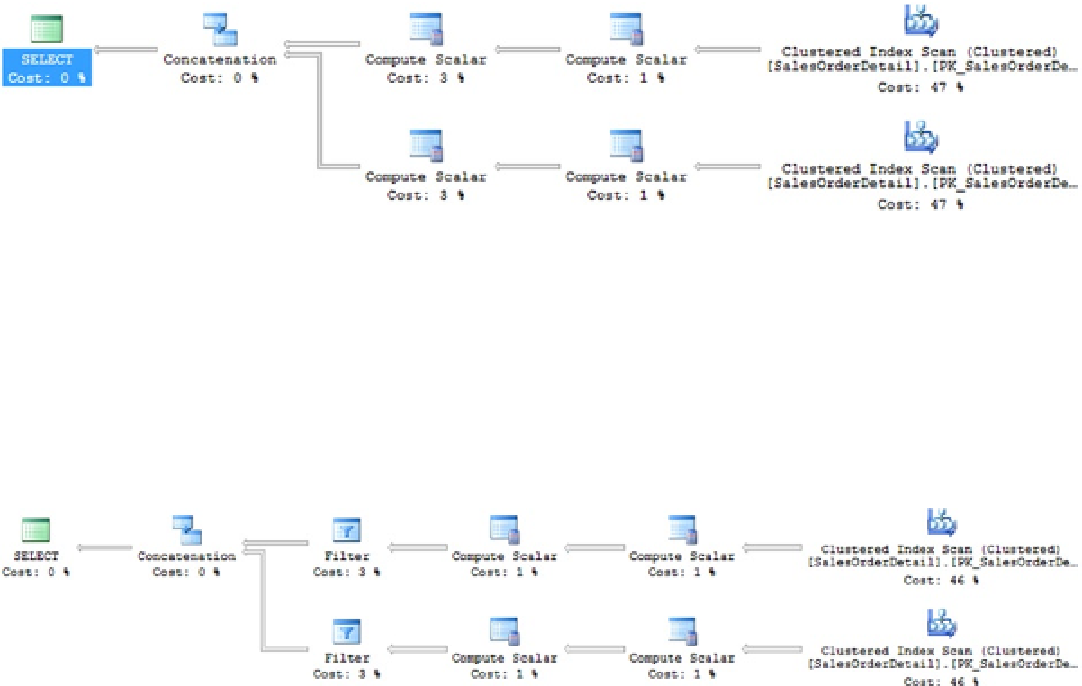Database Reference
In-Depth Information
As you can see, the
EXISTS
technique used only three logical reads compared to the 1,246 used by the
COUNT(*)
technique, and the execution time went from 29ms to 4ms. Therefore, to determine whether data exists, use the
EXISTS
technique.
Use UNION ALL Instead of UNION
You can concatenate the result set of multiple
SELECT
statements using the
UNION
clause as follows, as shown in
Figure
19-3
:
SELECT *
FROM Sales.SalesOrderDetail AS sod
WHERE sod.ProductID = 934
UNION
SELECT *
FROM Sales.SalesOrderDetail AS sod
WHERE sod.ProductID = 932;
Figure 19-3.
The execution plan of the query using the
UNION
clause
The
UNION
clause processes the result set from the two
SELECT
statements, removing duplicates from the final
result set and effectively running
DISTINCT
on each query. If the result sets of the
SELECT
statements participating
in the
UNION
clause are exclusive to each other or you are allowed to have duplicate rows in the final result set, then
use
UNION ALL
instead of
UNION
. This avoids the overhead of detecting and removing any duplicates and therefore
improves performance, as shown in Figure
19-4
.
Figure 19-4.
The execution plan of the query using
UNION ALL

